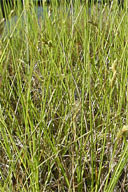 Loading... Please wait...
Loading... Please wait...- Home
- SEEDS
- SEED MIXES
- BUY PLANTS
- Info Request
-
Educational Videos
- Greenhouse Transplanting Demonstration
- Native Seed Cleaning demonstration at Ion Exchange Native Seed and Plant Nursery
- Attracting Butterflies
- Bidens - Bidens cernua Harvest Video
- Big Blue Stem Harvest
- Butterfly Milkweed Video
- Button Blazingstar - Liatris aspera Video
- Buttonbush - Cephalanthus occidentalis Video
- Canada Anemone - Anemone canadensis Harvest Video
- Cardinal Flower - Lobelia cardinalis Video
- Control Burn - Wildflower Field
- Cream Gentian - Gentiana flavida
- Culver's Root - Veronicastrum virginicum Video
- Cup Plant - Silphium perfoliatum Video
- Dormant Seeding | Planting
- Earthyman's Favorite Wildflowers Video
- Eco-Friendly Golf Course Seed Mix
- Floating Islands
- Fringed Loosestrife - Lysimachia ciliata Video
- Giant Yellow Hyssop - Agastache nepetoides Video
- Indiangrass - Sorghastrum nutans Video
- Iowa Prairie Partner Program
- Leadplant - Amorpha canescens (Potted) Video
- Meadow Blazingstar - Liatris ligulistylis
- Midland Shooting Stars - Dodecatheon meadii Video
- Native Plant Nursery Field Irrigation Experiment
- Nodding Onion - Allium cernuum Video
- Ohio spiderwort - Tradescantia ohiensis Video
- Old Man's Beard - Clematis virginiana blooms Video
- Oxeye Sunflower - Heliopsis helianthoides Video
- Prairie Spiderwort - Tradescantia bracteata
- Purple Coneflower - Echinacea purpurea Video
- Rain Garden or Water Garden Video
- Rattlesnake Master - Eryngium yuccifolium Video
- Riverbank Stabilization - Wetland Plants
- Rose Mallow - Hibiscus militaris Video
- Rosinweed - Silphium integrifolium Video
- Royal Catchfly - Silene regia
- Showy Tick Trefoil - Desmodium canadense Video
- Sneezeweed - Helenium autumnale Video
- Swamp Betony - Pedicularis lanceolata Video
- Swamp Milkweed - Asclepias incarnata Video
- Sweet Blackeyed Susan - Rudbeckia subtomentosa Video
- Tall Coreopsis - Coreopsis tripteris Video
- Urban Butterfly Garden
- Wild Bergamot - Monarda fistulosa Video
- Wild Geranium - Geranium maculatum Harvest
- Wild Goldenglow - Rudbeckia lanciniata Video
- Wild Petunia - Ruellia humilis Harvest Video
- Woodland Knotweed - Polygonum virginianum Video
- Yellow Coneflower - Ratibida pinnata Video
- Blog
- Resources
- Policies
Contact Us
Phone:
563-419-0837
or 563-535-7231
Email:
hbright@ionXchange.com
Browse Products
Add to Wish List
You Recently Viewed...
Our Newsletter
Product Description
This native perennial grass is 2–3½' tall, forming tufts of unbranched culms that are erect to ascending. Each culm is light to medium green, terete, and glabrous; there are about 6 alternate leaves along its length. The leaf blades are up to 12" long and 7 mm. across, ascending to widely spreading, and flat or slightly curved. Each leaf blade is medium green to grayish blue and slightly rough on the upper surface, while its lower surface is medium green, glabrous, and smooth. The leaf sheaths are medium green, finely veined, and hairless. The ligules are white-membranous.
| Sun Exposure | Prairie, Savanna, Woodland |
| Soil Moisture | Wet, Wet Mesic, Mesic |
| Bloom Time |
|
| Bloom Color | |
| Max Height | 3 feet |
| Wetland Code | OBL |
| Germ Code | A, D |
| Seeds Per Ounce | 90,000 |
"Each culm terminates in an airy panicle of spikelets up to 12"" long and half as much across; it is usually pyramidal in shape with the longer branches toward the bottom (up to 5"" long). When the culm is not erect, the branches of the entire inflorescence may lean toward one side. These branches are slender and rough; they are ascending to spreading near the central axis of the inflorescence, otherwise they have a tendency to droop downward. The branches occur in whorls of 2-4 along the central axis, where they are largely naked. Individual spikelets occur at the tips of the terminal branchlets. Each spikelet is pale green to pale purple and about 3-4 mm. long; it has 3-7 lemmas in two ranks and a pair of glumes at the bottom. The tiny glumes are 0.5–1.0 mm. in length, ovate to lanceolate-ovate, and single-veined. The lemmas are 1.25–2.0 mm. in length, oblong-ovate, and gently curved; each lemma has 7 prominent veins and its margins become white-membranous toward the apex. There is no tuft of hairs at the base of each lemma. The blooming period occurs from early to mid-summer. Afterwards, the spikelets become greenish yellow and finally light tan when their small grains have matured; disarticulation is above the the glumes. The root system is fibrous. This grass spreads by reseeding itself and occasionally forms colonies.
The preference is full sun to light shade, wet to mesic conditions, and a fertile loamy soil. This grass requires more moisture in sunny areas than when it is growing in the shade. Most vegetative growth occurs during the spring and early summer.
(PLS) Fowl Manna Grass (Glyceria Striata) is a native perennial grass is 2
Edible Uses: Seed. No more details, but the seed is very small and fiddly to harvest.
Medicinal Uses: Unknown
Herbal Uses: Unknown












